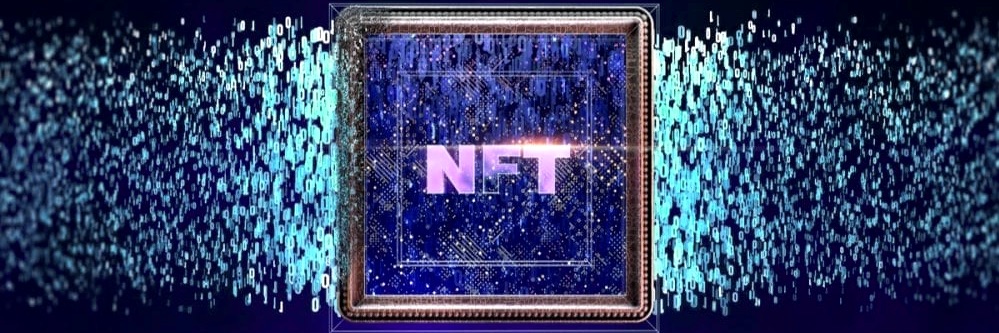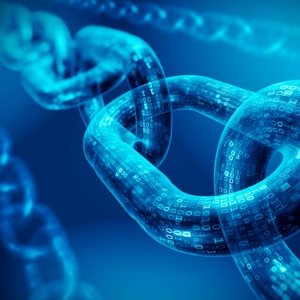How Non-Fungible Tokens (NFTs) Can Help Digital Creators Prove Ownership
by Web Commodore [email protected]

We live in a world of online sharing and collaboration. Digital creations are shared with fans, co-workers and customers with a simple mouse click or finger tap, giving all recipients instant access to the digital works itself. The internet has made the distribution of any digital creation super-effective. Where it lacks efficiency, however, is in the area of ownership and rights protection. Particularly in the context of collaborative projects, take for instance the production of a music video, numerous individual digital assets form the ingredients. Photos, music creations and recordings, and video clips containing footage that may or may not actually make it into the final production are shared and submitted by collaborators. Formal registration of ownership and copyright tends to be reserved for the final product only, leaving the "ingredient" digital works relatively unprotected.
Should a dispute over the ownership of say one of the photos or video footage arise, neither the actual digital creator nor any of the project collaborators holding a copy of the original file are likely to be able to produce sufficient legal evidence to settle that dispute. What is required is solid proof of existence as evidence of the time at which the original creator was in possession of the digital works in order to settle any such ownership dispute decisively.
Timestamped proof issued by a central authority
 There are two ways to generate solid evidence that a digital creation existed and was in the possession of its creator at a specific moment in time. The first is to use a central service to cryptographically create timestamped tokens as proof of existence. One such example is the World Intellectual Property Organization's WIPO PROOF service. Matching only the exact original file and exact date and time of token creation, these tokens are widely accepted as solid proof of existence for any digital asset and can be independently verified at any time using a public key infrastructure (PKI). The actual contents of the digital file are kept confidential as only a unique fingerprint (hash) of the file is used for the token creation and verification. As with any piece of evidence, proof tokens need to be kept securely stored and backed up in order to ensure long-lasting effective protection - without the tokens there is no proof.
There are two ways to generate solid evidence that a digital creation existed and was in the possession of its creator at a specific moment in time. The first is to use a central service to cryptographically create timestamped tokens as proof of existence. One such example is the World Intellectual Property Organization's WIPO PROOF service. Matching only the exact original file and exact date and time of token creation, these tokens are widely accepted as solid proof of existence for any digital asset and can be independently verified at any time using a public key infrastructure (PKI). The actual contents of the digital file are kept confidential as only a unique fingerprint (hash) of the file is used for the token creation and verification. As with any piece of evidence, proof tokens need to be kept securely stored and backed up in order to ensure long-lasting effective protection - without the tokens there is no proof.
Non-fungible tokens: Proof of existence and ownership registered on the public blockchain
 An alternative method of creating timestamped proof of existence for any digital file is to create a so-called non-fungible token (NFT) on the blockchain, an secure and indestructible public ledger that registers the creation and ownership of any such token. NFTs have gained significant popularity recently and are set to have a fundamental impact on intellectual property protection and IP law going forward. A good introductory video that explains what NFTs are in detail can be found here.
An alternative method of creating timestamped proof of existence for any digital file is to create a so-called non-fungible token (NFT) on the blockchain, an secure and indestructible public ledger that registers the creation and ownership of any such token. NFTs have gained significant popularity recently and are set to have a fundamental impact on intellectual property protection and IP law going forward. A good introductory video that explains what NFTs are in detail can be found here.
Concerns about the wider adoption of NFTs as proof of existence and ownership of any digital file have been raised surrounding the high environmental impact and economic costs - blockchains are arguably the most expensive way to store data and require significant computational work and - with it - energy consumption to operate. Questions have also been raised about the protection of privacy - important, for instance, for legal trade secret protection - due to public nature of blockchain transactions. Last but not least, the acceptance of NFTs as legal evidence is yet to be adopted across a larger number of jurisdictions globally.
Best of both worlds: The ultimate in IP protection
 Coming back to the requirement for digital content creators to have access to effective protection of their ownership and copyright, one could argue that the best of both worlds - a central trusted proof token generation service and registration as NFTs on the blockchain - should provide the perfect combination. That's why Web Commodore generates timestamped proof of existence and possession of any digital file both by issuing Digital Proof Tokens as well as registering them as NFTs on the blockchain. On the latter, privacy concerns are alleviated by adding a cryptographic layer - keeping ownership details included with the NFTs secret yet verifiable. By choosing the GoChain blockchain, the NFT creation requires only a small fraction of the computation resources and environment impact that other, say Ethereum or Bitcoin based blockchains - without sacrificing any of the integrity or security.
Coming back to the requirement for digital content creators to have access to effective protection of their ownership and copyright, one could argue that the best of both worlds - a central trusted proof token generation service and registration as NFTs on the blockchain - should provide the perfect combination. That's why Web Commodore generates timestamped proof of existence and possession of any digital file both by issuing Digital Proof Tokens as well as registering them as NFTs on the blockchain. On the latter, privacy concerns are alleviated by adding a cryptographic layer - keeping ownership details included with the NFTs secret yet verifiable. By choosing the GoChain blockchain, the NFT creation requires only a small fraction of the computation resources and environment impact that other, say Ethereum or Bitcoin based blockchains - without sacrificing any of the integrity or security.
By making the creation of Digital Proof Tokens and registration as NFTs on the blockchain highly affordable and as easy as a simple drag and drop operation, Web Commodore provides all digital content creators with the ultimate in IP protection.
